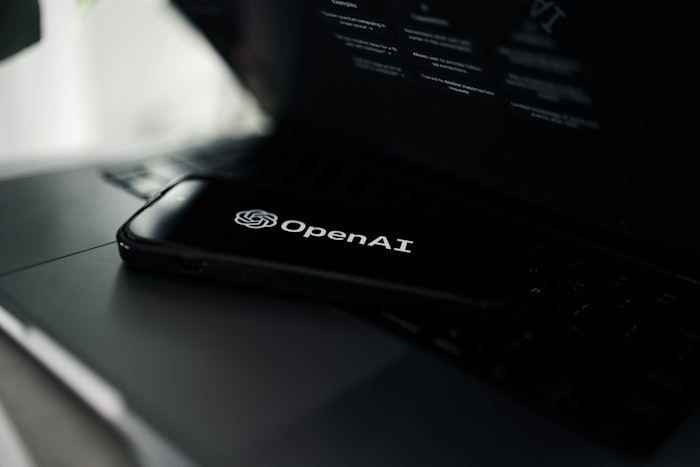Artificial Intelligence, often referred to as AI, is a field of computer science that aims to create intelligent machines that can perform tasks that typically require human intelligence. These tasks include problem-solving, decision-making, perception, and language understanding. AI systems are designed to analyze and interpret vast amounts of data, learn from experience, and adapt to new situations. The goal of AI is to mimic human intelligence and provide solutions to complex problems.
The concept of AI has been around for decades, but recent advancements in technology and the availability of large amounts of data have accelerated its development. AI can be categorized into two main types: narrow AI and general AI. Narrow AI refers to AI systems that are designed for specific tasks, such as image recognition or language translation. General AI, on the other hand, refers to AI systems that have the ability to understand and perform any intellectual task that a human being can do.
AI has the potential to revolutionize various industries and improve our daily lives. From self-driving cars to virtual assistants, AI is being integrated into many aspects of our society. However, it also raises ethical concerns and challenges. As AI becomes more advanced, it is important to ensure that it is used responsibly and ethically to benefit humanity.
Types of Artificial Intelligence
Artificial Intelligence can be categorized into two main types: narrow AI and general AI.
1. Narrow AI, also known as weak AI, is designed to perform specific tasks and is limited to a narrow range of applications. It excels at a particular task but lacks the ability to perform tasks outside of its scope. For example, virtual personal assistants like Siri and Alexa are narrow AI systems that can understand and respond to voice commands, but they cannot perform complex reasoning or understand context beyond their programmed capabilities.
2. General AI, also referred to as strong AI, is a hypothetical form of AI that possesses the same level of intelligence and understanding as a human being. It has the ability to understand, learn, and apply knowledge across a wide range of tasks and domains. General AI is capable of performing any intellectual task that a human can do. However, the development of true general AI is still a subject of ongoing research and has not been achieved yet.
Within these two main categories, there are also subcategories of AI systems based on their capabilities and functionalities. Some examples include:
a. Machine Learning (ML): ML is a subset of AI that focuses on enabling machines to learn from data and make predictions or decisions without being explicitly programmed. It involves the use of algorithms that can improve their performance over time through experience.
b. Natural Language Processing (NLP): NLP allows machines to understand and interpret human language, both written and spoken. It involves tasks such as language translation, sentiment analysis, and speech recognition.
c. Computer Vision: It enables machines to interpret and understand visual information from images or videos. Computer vision is used in various applications like facial recognition, object detection, and autonomous vehicles.
Training AI Models
Training AI models is a crucial step in the development of artificial intelligence. It involves feeding the AI system with a large amount of data and allowing it to learn patterns and make connections. The process of training AI models can be divided into two main steps: data collection and model training.
Data collection is the first step in training AI models. This involves gathering a diverse and representative dataset that contains examples of the task the AI system is expected to perform. For example, if the AI system is being trained to recognize images of cats and dogs, the dataset would need to include a wide range of cat and dog images. The larger and more diverse the dataset, the better the AI model will be able to learn and generalize.
Once the dataset is collected, the next step is model training. This is where the AI system learns to recognize patterns and make predictions based on the input data. The training process involves feeding the dataset into the AI model and adjusting its internal parameters to minimize the difference between the model's predictions and the actual outputs. This is typically done using algorithms such as gradient descent, which iteratively update the model's parameters to improve its performance.
During training, the AI model learns to recognize features and patterns in the data that are relevant to the task at hand. It learns to associate certain inputs with certain outputs, and to make predictions based on the learned patterns. The more examples the AI model is exposed to, the better it becomes at making accurate predictions. This is why having a large and diverse dataset is crucial for training AI models.
Training AI models can be a resource-intensive process, requiring significant computational power and time. The training process often involves running the dataset through the AI model multiple times, with each iteration refining the model's parameters and improving its performance. Depending on the complexity of the task and the size of the dataset, training an AI model can take hours, days, or even weeks.
Once the AI model is trained, it can be used to make predictions on new, unseen data. The trained model has learned from the training dataset and can now generalize its knowledge to new inputs. This is the power of AI - the ability to learn from data and make predictions based on that learning.
Making Predictions with AI
One of the key capabilities of artificial intelligence is its ability to make predictions based on data analysis. AI models are trained using large datasets that contain a wealth of information. These models learn patterns and relationships within the data, enabling them to make accurate predictions and forecasts.
The process of making predictions with AI involves feeding new data into the trained model and letting it analyze the information. The model then applies the patterns it has learned from the training data to make predictions about the new data. This can be incredibly useful in a variety of fields, such as finance, healthcare, weather forecasting, and marketing.
For example, in the finance industry, AI can be used to predict stock prices based on historical data and market trends. This can help investors make informed decisions about buying or selling stocks. In healthcare, AI can analyze patient data to predict the likelihood of certain diseases or conditions, allowing doctors to take preventive measures or develop personalized treatment plans.
AI predictions are not limited to numerical data. Natural language processing (NLP) techniques can be used to analyze and predict text-based data. This has applications in sentiment analysis, customer service chatbots, and language translation, among others.
Predictive AI models have the potential to revolutionize industries by providing accurate insights and forecasts.
However, it's important to note that AI predictions are not always 100% accurate. The accuracy of the predictions depends on the quality of the training data and the complexity of the problem being solved. It's crucial to continuously evaluate and improve the AI models to ensure their predictions are reliable and up-to-date.
In conclusion, making predictions with AI is a powerful tool that can provide valuable insights and help businesses and industries make informed decisions. By leveraging the patterns and relationships learned from large datasets, AI models can accurately forecast outcomes, enabling organizations to optimize processes, reduce costs, and improve overall efficiency.
Applications of AI
Artificial Intelligence has found its way into various industries and has revolutionized the way we live and work. Here are some of the key applications of AI:
1. Healthcare: AI is transforming the healthcare industry by improving diagnosis accuracy, predicting patient outcomes, and assisting in drug discovery. AI-powered tools can analyze medical data, such as patient records and medical images, to identify patterns and provide valuable insights for doctors and researchers.
2. Finance: AI is being used in the finance industry for fraud detection, risk assessment, and algorithmic trading. Machine learning algorithms can analyze large volumes of financial data in real-time to identify suspicious activities and potential risks. AI-powered trading systems can also make automated trading decisions based on market trends and historical data.
3. Transportation: AI plays a crucial role in autonomous vehicles and smart transportation systems. Self-driving cars use AI algorithms to perceive the environment, make decisions, and navigate safely. AI also optimizes traffic flow, reduces congestion, and improves route planning in cities.
4. Retail: AI is transforming the retail industry by personalizing customer experiences and improving supply chain management. AI-powered recommendation systems analyze customer data and behavior to provide personalized product recommendations. AI also optimizes inventory management, demand forecasting, and enhances the overall efficiency of the supply chain.
5. Education: AI is revolutionizing the education sector by providing personalized learning experiences and intelligent tutoring systems. AI-powered educational platforms can assess students' strengths and weaknesses, adapt the curriculum to individual needs, and provide targeted feedback. AI also automates administrative tasks, freeing up teachers' time for more personalized interactions with students.
These are just a few examples of how AI is being applied in various industries. The potential of AI is vast, and its applications continue to expand across different sectors, making our lives easier and more efficient.
Conclusion
In conclusion, artificial intelligence is a rapidly developing field that has the potential to revolutionize various industries and improve our daily lives. By mimicking human intelligence and learning from vast amounts of data, AI systems can make predictions, solve complex problems, and automate tasks with great accuracy and efficiency.
Throughout this article, we have explored the basic concepts of artificial intelligence, including its different types and applications. We have also delved into the process of training AI models, which involves feeding them with data, optimizing their algorithms, and fine-tuning their parameters to achieve the desired performance.
AI has already made significant advancements in areas such as healthcare, finance, transportation, and customer service. It is being used to diagnose diseases, detect fraud, develop self-driving cars, and provide personalized recommendations. As technology continues to evolve, we can expect AI to become an integral part of our everyday lives, making our tasks easier, improving decision-making, and driving innovation.
However, it is important to approach the development and implementation of AI with caution. Ethical considerations, privacy concerns, and bias in algorithms are all factors that need to be carefully addressed to ensure that AI is used responsibly and for the benefit of humanity.
In summary, artificial intelligence holds immense potential to transform the way we live and work. As advancements continue, it is crucial for individuals, organizations, and governments to collaborate in shaping the future of AI, ensuring that it is used ethically, responsibly, and for the collective good.
Master of pixels, product whisperer, and UI-unicorn, infusing fun and flair into the tech world, one blog post at a time.




